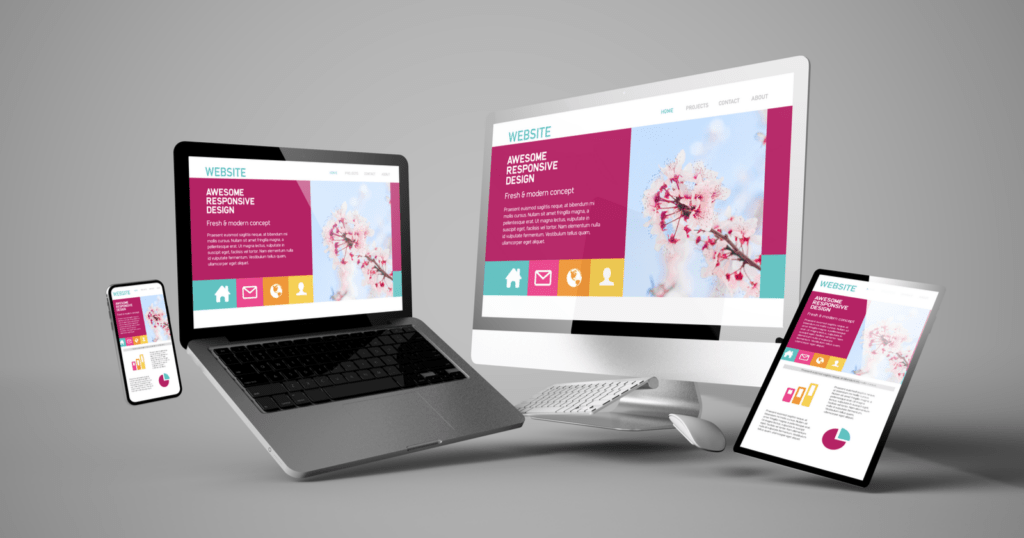Unique Website Design Solutions for Business Websites
Unique Website Design Solutions for Business Websites
Blog Article
Leading Tips for Developing an Impactful Web Site Style That Transforms
In today's digital landscape, the relevance of an impactful site layout can not be overstated, especially when it involves converting visitors into customers. To accomplish this, one need to consider a range of variables, consisting of understanding the target audience, prioritizing individual experience, and optimizing for mobile systems. Additionally, the tactical use compelling call-to-actions and a distinct aesthetic pecking order plays a critical duty in directing users through their trip. As we check out these necessary aspects, it ends up being evident that the success of your internet site rests on greater than just looks; it requires a thoughtful strategy to style and functionality.

Understand Your Target Market
Understanding your target market is essential to reliable web site style, as it prepares for developing an engaging user experience. Determining who your individuals are, including their demographics, preferences, and actions, allows developers to tailor the website's content, format, and functionality to fulfill certain needs.
Performing thorough market study is important in this process. Studies, meetings, and analytics can provide important understandings right into customer expectations and pain factors. By compiling this information, developers can create user characters that represent different sectors of the audience, making certain that style choices are educated and pertinent.
Additionally, comprehending the target market aids in selecting proper layout elements such as color plans, typography, and images that reverberate with individuals. A web site that talks straight to its audience fosters a feeling of connection and count on, motivating longer visits and higher conversion prices.
Inevitably, a user-centered approach to site design not just enhances user fulfillment but also supports company goals by driving interaction and commitment. By prioritizing the requirements and choices of the target market, a web site can effectively serve its purpose and achieve preferred outcomes.
Prioritize User Experience
To enhance the overall effectiveness of a website, prioritizing individual experience (UX) is vital (Website Design). A well-designed UX ensures that site visitors can browse the website effortlessly, find info rapidly, and engage with content meaningfully. This leads to boosted individual complete satisfaction and higher conversion prices
Begin by carrying out user-friendly navigation. Menus should be rationally structured, allowing customers to find essential areas of the site with marginal effort. Consistency in layout elements, such as color design and font styles, promotes familiarity, which is crucial for maintaining customer engagement.
In addition, consider the packing speed of your internet site. A hold-up of simply a couple of seconds can bring about considerable drop-offs, as individuals are less most likely to await a slow-loading web page. Enhancing pictures and maximizing code can enhance performance and maintain visitors.
By prioritizing individual experience, you not just develop a more enjoyable environment for visitors however also strengthen your brand's trustworthiness. Eventually, an emphasis on UX is an investment in the long-lasting success of your internet site.
Maximize for Mobile Devices
Optimizing for mobile phones is crucial in today's digital landscape, where an enhancing number of users accessibility sites with mobile phones and tablets. A mobile-friendly layout not just boosts customer experience however additionally plays a substantial duty in boosting online search engine rankings. To achieve this, it is important to adopt a receptive design that immediately changes to different screen sizes and alignments.

Filling rate is an additional important aspect; mobile users are normally less individual and expect fast access to details. By focusing on mobile optimization, you guarantee that your site continues to be competitive and efficiently engages a wider target market.
Use Compelling Call-to-Actions
A site's efficiency often hinges on its capability to direct visitors my site toward preferred actions, making engaging call-to-actions (CTAs) essential components of layout. CTAs function as the pivotal factors that direct users to involve with the website, whether that indicates buying, registering for an e-newsletter, or downloading a source.
To produce effective CTAs, clarity is vital. Usage concise language that clearly communicates the activity you desire the customer to take. Phrases such as "Obtain Started," "Sign Up Free," or "Store Now" not just share necessity but also eliminate ambiguity. The placement of CTAs is just as essential; they should be strategically positioned throughout the web page to ensure they are quickly noticeable, specifically in high-traffic areas.
Additionally, the design of CTAs should attract attention without being obtrusive. Use contrasting colors and clear fonts to ensure they capture attention. In addition, consider using directional hints, such as arrowheads or photos, to guide users towards these switches. By concentrating on these elements, businesses can considerably boost user involvement, driving conversions and eventually achieving their website's objectives.
Concentrate On Visual Hierarchy
Efficient site design relies greatly on a well-structured visual hierarchy that guides users via material effortlessly. By arranging elements in a manner that focuses on details, developers can improve user experience and promote decision-making. This includes making use of dimension, shade, comparison, and spacing purposefully to accentuate one of the most important parts of a web page.
The use of larger font styles for headings and subheadings develops a clear distinction in between different sections, allowing users to scan material effortlessly. Additionally, employing different colors for buttons and calls-to-action can catch user focus and motivate interaction. Whitespace is another crucial element; it prevents mess and enables customers to focus on vital messages without diversions.
Images and graphics must enhance the text while likewise sticking to the well-known hierarchy, reinforcing the total message (Website Design). Uniformity in layout components, such as color design and typography, further enhances the aesthetic power structure, making navigation user-friendly

Verdict
In final thought, efficient website design requires a detailed understanding of the target audience, prioritization of customer experience, and mobile optimization. Ultimately, a well-executed internet site layout serves as an essential element in driving customer actions and achieving service purposes.
Report this page